Russia
Astronauts by top nations
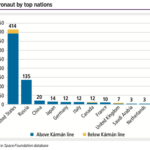
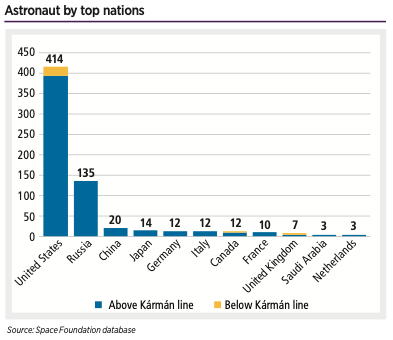
The majority of astronauts (95%) have also reached the Kármán line at 100 km — the internationally recognized boundary of space.
SNAPSHOT: Global space economy
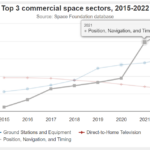
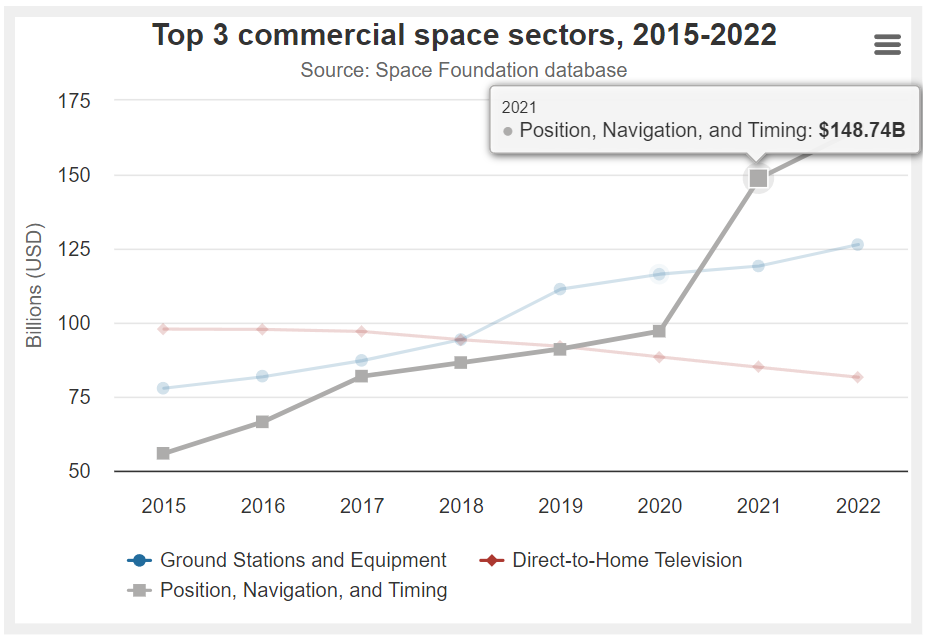
The global space economy totaled $546 billion in 2022, 8% higher than 2021 — and it could reach $772 billion by 2027, according to Space Foundation analysis.
2020s is the busiest decade for Moon landings in 50 years
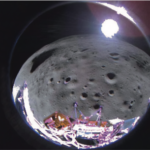
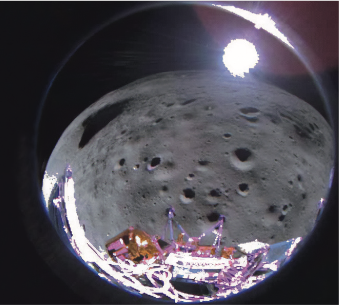
In the span of six months from 2023 to 2024, three countries landed spacecraft on the Moon, and many more are in the works.
SNAPSHOT: New launch vehicles
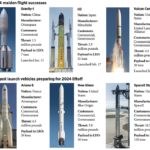
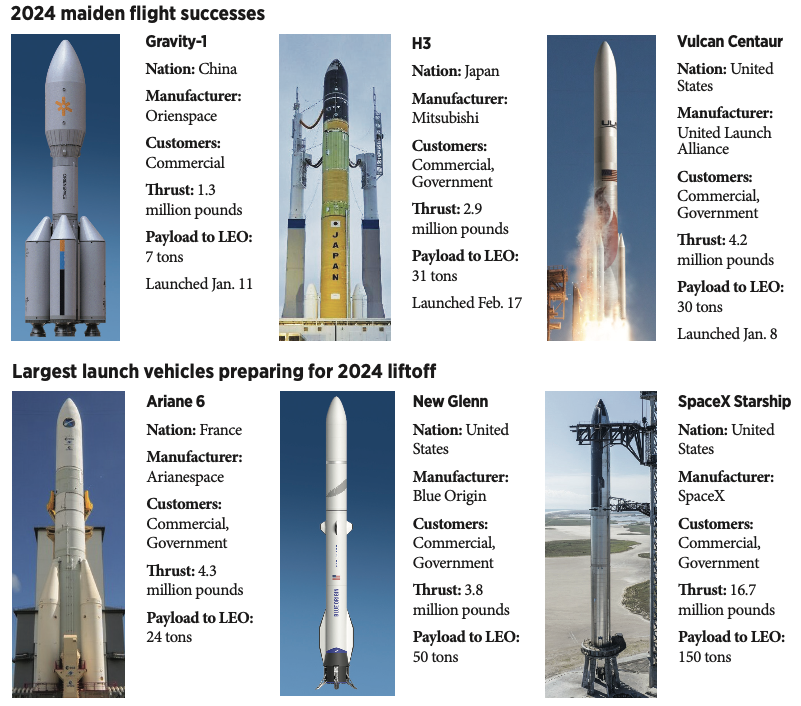
The launches included successful maiden flights for three new launch vehicles. With a dozen more new launch vehicles expected to debut, 2024 appears poised to be a game-changing year in orbital flight.
SNAPSHOT: Human spaceflight
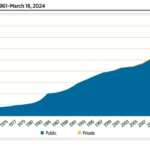
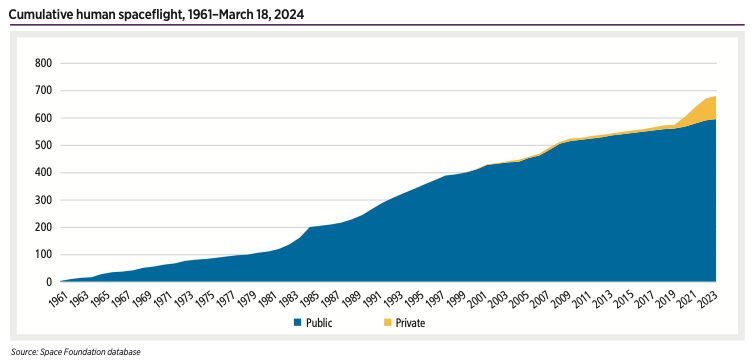
As of mid-March, 685 astronauts have reached at least 80 kilometers above the Earth’s surface. This total includes 86 private astronauts, 22 times as many as there were two decades ago.
Commercial offerings continue to grow, shape future of space

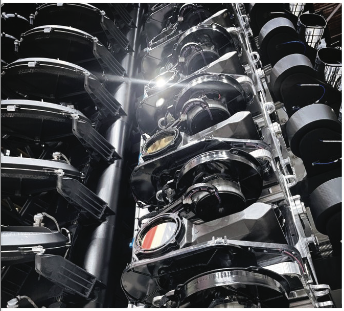 [caption id="attachment_40285" align="alignleft" width="344"] Starlink satellites sent a text message directly to a mobile phone in January using a new generation of spacecraft.Credit: SpaceX[/caption] Introduction | Commercial space has come…
[caption id="attachment_40285" align="alignleft" width="344"] Starlink satellites sent a text message directly to a mobile phone in January using a new generation of spacecraft.Credit: SpaceX[/caption] Introduction | Commercial space has come… After Russian ASAT leak, superpowers back away from showdown
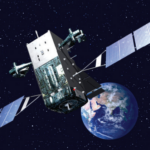
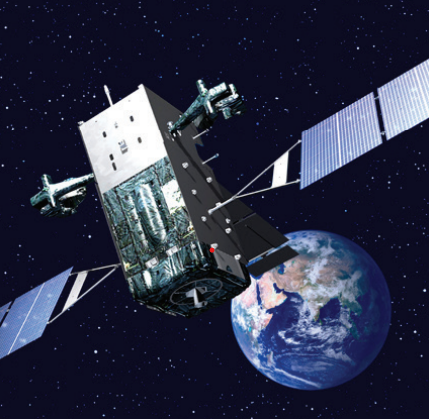
Growing threats from anti-satellite weapons were spotlighted in February when U.S. officials warned Congress about a Russian weapons development program targeting spacecraft with nuclear weapons.
SpaceX surpasses its 50th astronaut launched to space
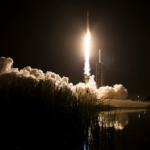
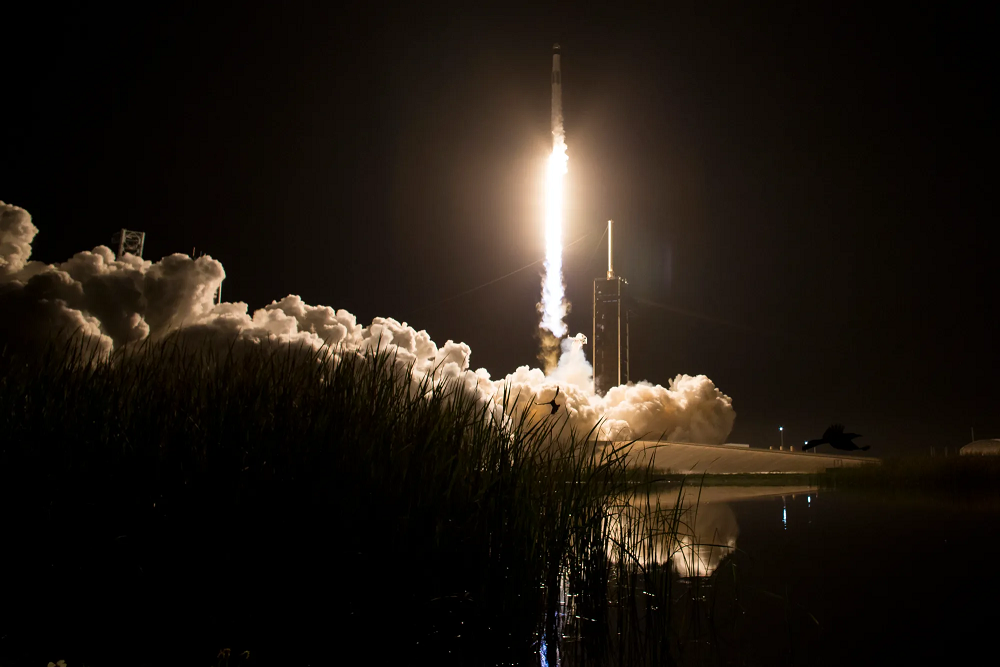
SpaceX launched its Crew-8 mission to the International Space Station, surpassing 50 humans sent to space by the company. This is the first spaceflight for spacecraft commander Matthew Dominick and specialists Jeanette Epps and Alexander Grebenkin. However, it is pilot Michael Barratt’s third voyage into orbit.
Launch Attempts by Country and Category, 2023
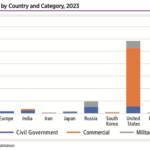
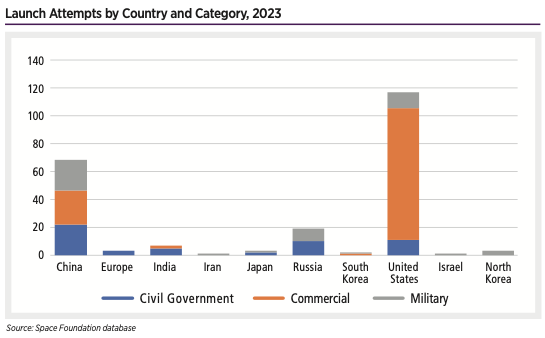
The United States launched 11 military missions in the year, including payloads for the National Reconnaissance Office and a new generation of small communications satellites for the Space Development Agency. Russia launched 10 civil government missions in 2023, including Soyuz launches to send crews to the International Space Station, which remains one area of cooperation between the Kremlin and NASA. India made headlines with its successful launch of a lunar probe while the European Space Agency, awaiting its new Ariane-6 launch vehicle, launched three spacecraft including its Euclid space observatory.
Launch Attempts by Select Nations, 2022-2023
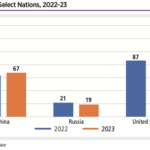
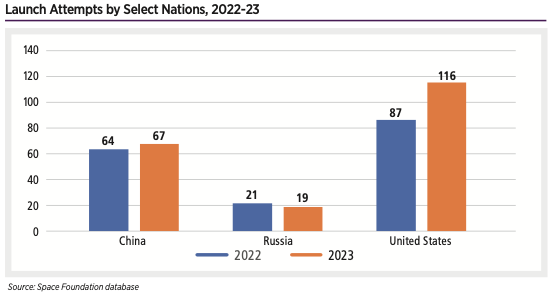
The record number of launches came despite delays that pushed the debuts of several long-anticipated launch vehicles into 2024. It was the third consecutive year to shatter launch records, despite a decline in European and Russian launches.